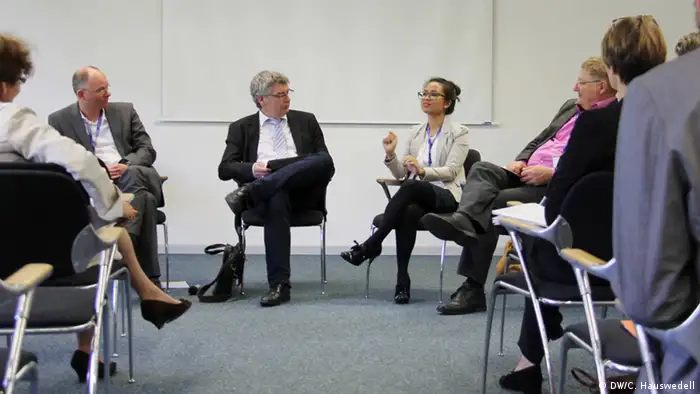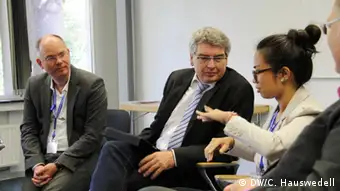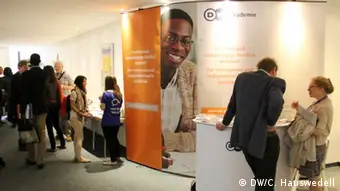Regions
EADI Conference: The Middle Class and the media
In many developing countries, the middle class is growing at a rapid rate. What does that mean for media and media development? Experts invited by DW Akademie tackled that question at a development conference in Bonn.

Media at the center of development research: a DW Akademie podium discussion at the EADI conference in Bonn
A growing middle class goes hand-in-hand with an increase in the number of media outlets. In India, for example, the public broadcaster Doordarshan was the only television station until 1992. Today, India has some 800 television stations and 300 of these are news channels, said media scholar Daya Thussu, co-director of the India Media Center at the UK's University of Westminster.
This means India has the highest number of news media outlets in the world, said Thussu, speaking at the "Media and Citizenship Revisited" podium discussion held as part of the 2014 general conference of the European Association of Development Research and Training Institutes (EADI).
Chairperson Patrick Leusch, head of DW Akademie's International Cooperation Department, noted that the middle class in developing countries required better consumer information. This is because as disposable incomes increases, the middle class are facing more complex consumer choices - from finding out which small car is better value for money to deciding where to send their children to school. However, much of the media in the developing world wasn't yet up to the task of providing this kind of information. Old-style, quality journalism is likely not a business model for the future in these countries, added Holger Hank, head of DW Akademie Digital.
Alternative information sources
Penhleak Chan, a researcher at the open-data project, Open Development Cambodia (ODC), presented another perspective on how the middle class is using media. ODC is a platform that publishes economic and social development data and information relevant to Cambodia. The site has become an important source for middle class Cambodians interested in politics and policy, Chan said. Lobby and advocacy groups also use the data to highlight discrepancies between this publicly accessible information and the government's official statements.
However, the media boom in developing countries is not only positive - it has also led to an increasing distrust of the media, warned Per Oesterlund, director of the Danish media development organization Danicom. Because of this, media development organizations and their cooperation partners need to put a stronger emphasis on media ethics, he said.
As the number of media consumers grows, more efforts should also be made to strengthen media literacy, Oesterlund said.
The panel discussion "Media and Citizenship Revisited: the role of growing middle classes for new and traditional media in developing and emerging countries" was organized as part of the conference of the 2014 EADI general conference, held in Bonn, Germany at the end of June. The conference was dedicated to examining new perspectives and possibilities in the field of sustainable development that accompany the trend of middle class expansion in the developing world.
WWW links
- Date 14.07.2014
- Author Jörn Fischer / kj
- Print Print this page
- Permalink https://p.dw.com/p/1CcW7
- Date 14.07.2014
- Author Jörn Fischer / kj
- Print Print this page
- Permalink https://p.dw.com/p/1CcW7


